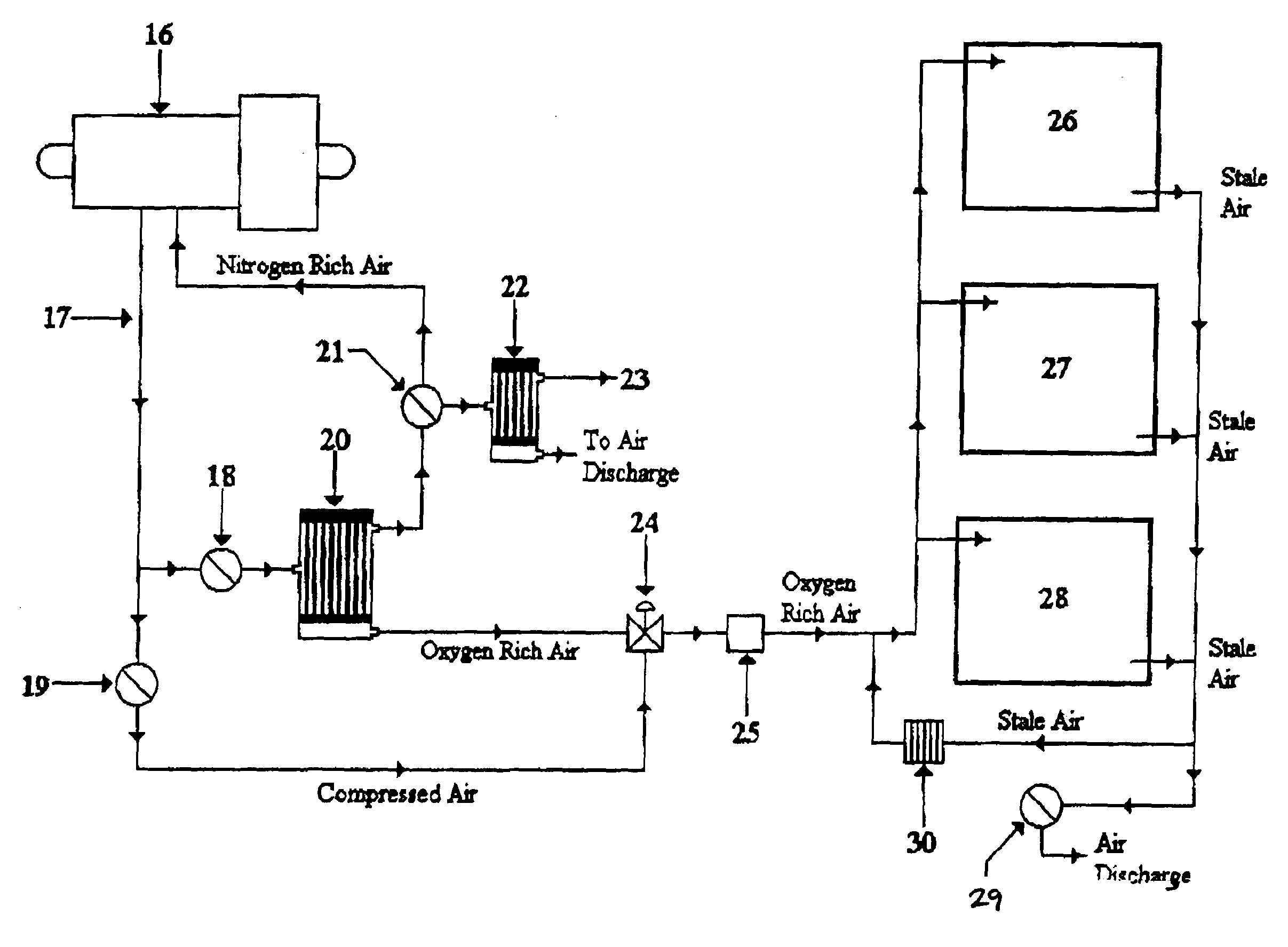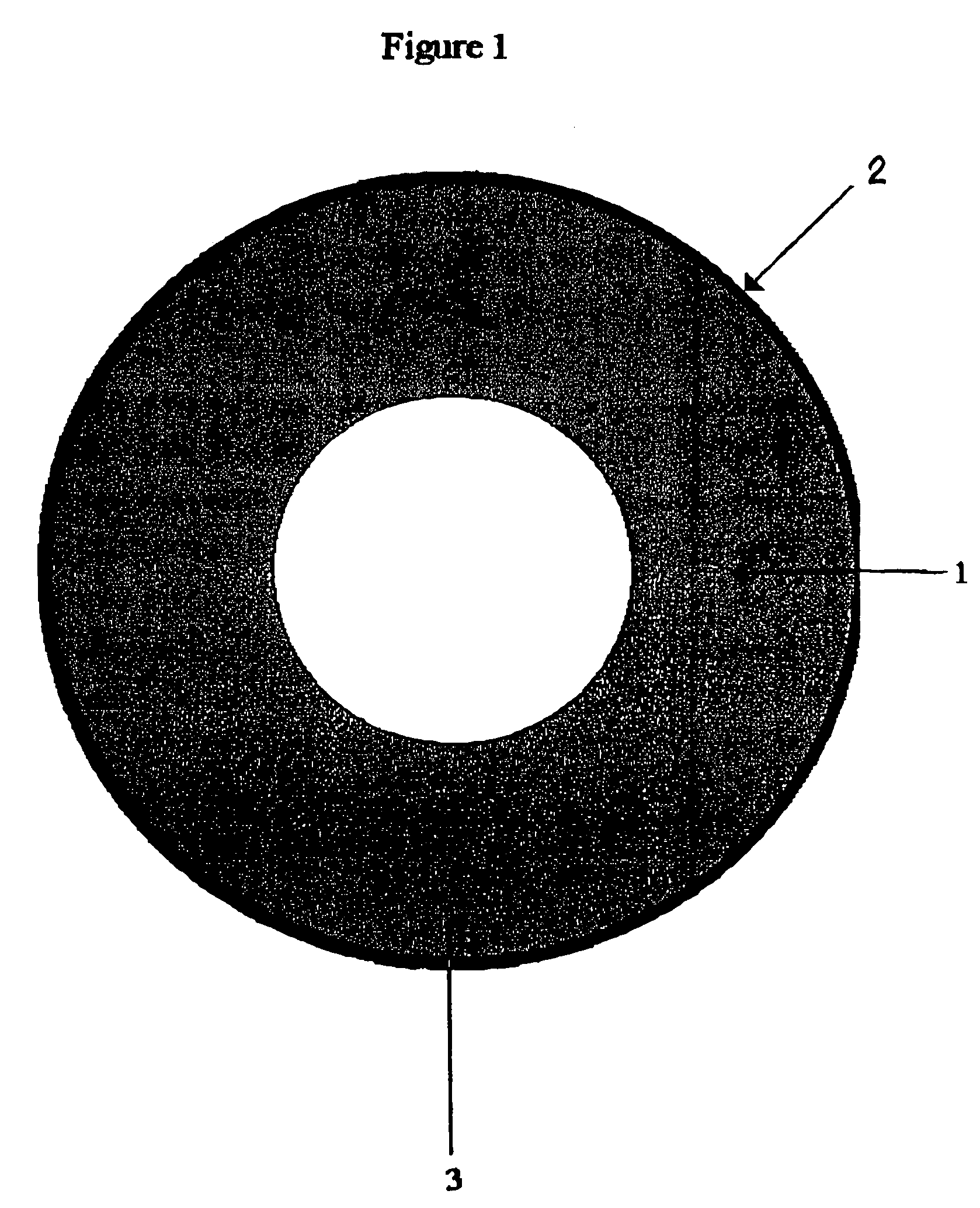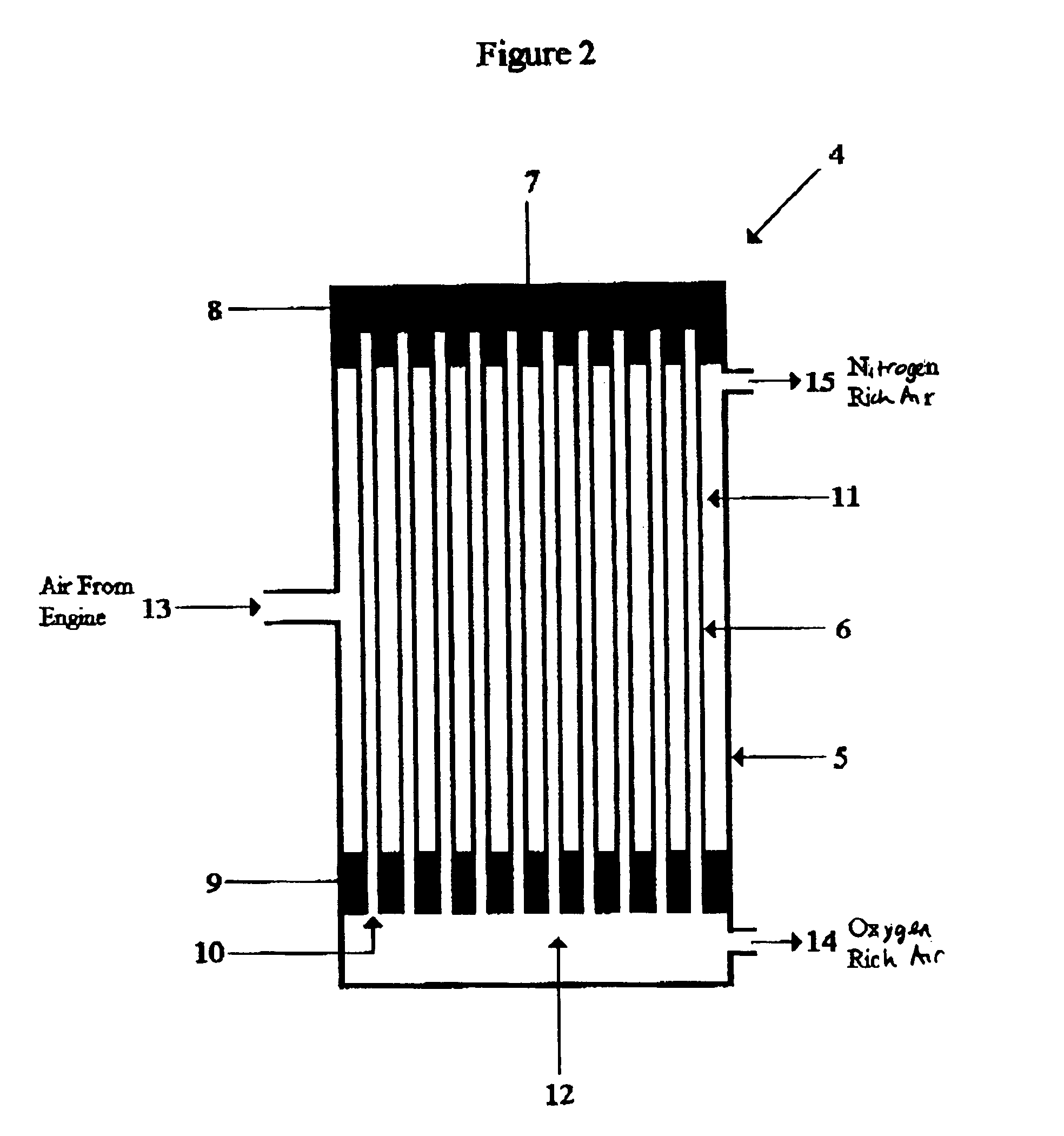Oxygen and nitrogen enriched atmospheres in aircraft
a technology of airspace and oxygen, applied in the direction of nitrogen purification/separation, membranes, separation processes, etc., can solve the problems of increasing the cost of an aircraft, and increasing the cost of a fuselage, so as to improve the breathable atmosphere
- Summary
- Abstract
- Description
- Claims
- Application Information
AI Technical Summary
Benefits of technology
Problems solved by technology
Method used
Image
Examples
Embodiment Construction
[0061]The basic construction of the composite hollow fibre membrane is illustrated in FIG. 1. A very porous hollow fibre tube 1, manufactured from polyethersulfone polymer, supports a very thin layer 2 of selective polymer coated onto the outer surface 3 of the fibre tube 1. The selective polymer consists of a mixture of non cross-linked polydimethylsiloxane and cross-linked polydimethylsiloxane
[0062]Both polyethersulfone and polydimethylsiloxane are widely used to manufacture hollow fibre membranes and their physical and chemical resistance properties are well known and well understood.
[0063]The hollow fibre tube is manufactured by extruding polyethersulfone polymer solution through a triple spinneret, and the extrusion conditions are controlled so as to provide a very porous fibre tube structure.
[0064]A particular feature of the hollow fibre tube used in the aircraft gas separation system is that, after extrusion, the polyethersulfone fibre is subjected to a special modification t...
PUM
| Property | Measurement | Unit |
|---|---|---|
| pressure | aaaaa | aaaaa |
| pressure | aaaaa | aaaaa |
| pressure | aaaaa | aaaaa |
Abstract
Description
Claims
Application Information
 Login to View More
Login to View More - R&D
- Intellectual Property
- Life Sciences
- Materials
- Tech Scout
- Unparalleled Data Quality
- Higher Quality Content
- 60% Fewer Hallucinations
Browse by: Latest US Patents, China's latest patents, Technical Efficacy Thesaurus, Application Domain, Technology Topic, Popular Technical Reports.
© 2025 PatSnap. All rights reserved.Legal|Privacy policy|Modern Slavery Act Transparency Statement|Sitemap|About US| Contact US: help@patsnap.com



